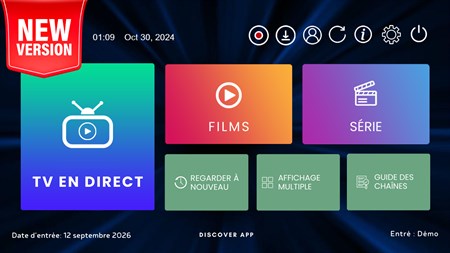Gratis og betalt applikation

I dagens digitale landskab består det enorme app-økosystem af gratis og betalte applikationer, der hver især tjener unikke formål og giver forskellige brugeroplevelser. Med den hurtige vækst på app-markedet står udviklere over for det strategiske valg mellem gratis apps, som er tilgængelige uden en indledende omkostning, og Betalte appssom kræver en forudgående betaling for at blive downloadet. Denne beslutning påvirker en apps brugertilgang, indtægtsgenerering og overordnede markedspositionering.
Gratis apps er ofte afhængige af in-app-reklamer, freemium-modeller og in-app-køb for at generere indtægter, mens Betalte apps prioriterer premium-brugeroplevelser ved at fjerne annoncer og tilbyde fuld adgang til funktioner. At forstå disse vigtige forskelle er afgørende for, at udviklere, marketingfolk og slutbrugere kan træffe informerede beslutninger i det konkurrenceprægede mobilapplikationsområde.
Gratis applikationer
Gratis applikationer er meget populære på grund af deres tilgængelighed og manglende startomkostninger, hvilket gør dem tiltrækkende for et bredt publikum. De fleste gratis apps udnytter indtjeningsstrategier som annoncer og freemium-opgraderinger for at opretholde rentabiliteten, samtidig med at de tilbyder en gratis download.
Vigtige karakteristika
- Ingen omkostninger på forhånd: Gratis apps er tilgængelige uden forudgående omkostninger, hvilket resulterer i højere downloadrater.
- Annoncer i appen: Mange gratis apps tjener penge gennem reklamer på platforme som Google AdMob og Facebook Audience Network.
- Freemium-model: Gratis apps indeholder ofte en basisversion med premium-funktioner, der er tilgængelige via køb i appen eller abonnementer.
Fordele ved gratis apps
- Høj brugertilgang: Da der ikke er nogen omkostningsbarriere, tiltrækker gratis apps generelt en større brugerbase.
- Brugerengagement og data: Gratis apps gør det lettere at indsamle data til målrettet annoncering, og de opfordrer til regelmæssigt engagement gennem belønninger eller sociale funktioner.
- Skalerbar indtægtsgenerering: Annoncer og opgraderinger i appen kan give en betydelig indtægt, hvis brugerbasen er stor og engageret.
Ulemper ved gratis apps
- Afhængighed af annoncer: Overdreven afhængighed af annoncer kan forstyrre brugeroplevelsen.
- Lavere direkte indtægter: Gratis apps har ingen umiddelbar indtægt fra downloads, hvilket gør rentabiliteten afhængig af annonceindtægter.
- Begrænsninger i grundlæggende funktioner: Brugere kan være begrænset til grundlæggende funktioner, mens avancerede funktioner er skjult bag betalingsmure.
Eksempler på vellykkede gratis apps
- Sociale medier: Facebook, Instagram og TikTok er afhængige af annoncer for at få indtægter.
- Spil: Titler som Candy Crush og Clash of Clans bruger freemium-modellen med valgfrie køb i appen.
Betalte ansøgninger
Phjælpeapps kræver, at brugerne betaler på forhånd, og leverer typisk en reklamefri premium-oplevelse til gengæld. De fokuserer på at levere funktioner og tjenester af høj kvalitet, som retfærdiggør omkostningerne.
Vigtige karakteristika
- Engangsbetaling: Betalte apps genererer indtægter gennem et indledende købsgebyr.
- Reklamefrit miljø: I modsætning til gratis apps undgår betalte applikationer reklamer, hvilket resulterer i en uafbrudt oplevelse.
- Omfattende funktioner: Betalte apps giver normalt fuld adgang til funktioner, der understøtter en brugeroplevelse af høj værdi.
Fordele ved betalte apps
- Umiddelbar indtægt: Hver download genererer indtægter og skaber en forudsigelig indtægtsstrøm.
- Højere brugerengagement: Brugere, der betaler, er generelt mere engagerede og loyale, hvilket reducerer churn.
- Premium-oplevelse: Betalte apps kan fokusere på brugertilfredshed uden at have brug for annoncer for at tjene penge.
Ulemper ved Betalte apps
- Begrænset publikum: Startomkostningerne reducerer antallet af potentielle downloads, hvilket begrænser brugertilgangen.
- Høje forventninger: Betalt app Brugerne forventer premium-funktioner og regelmæssige opdateringer for at retfærdiggøre deres køb.
- Konkurrence på markedet: I mange app-kategorier kræver det stærk brandgenkendelse eller unikke funktioner at overbevise brugerne om, at de skal betale.
Eksempler på succesfulde betalte apps
- Produktivitet: Notability og Procreate er populære på grund af deres avancerede værktøjer, hvilket gør dem den oprindelige pris værd.
- Førsteklasses spil: Monument Valley og Stardew Valley leverer spiloplevelser af høj kvalitet, som er ideelle for brugere, der søger førsteklasses underholdning.
Konklusion
At vælge mellem en gratis eller betalt app Modellen afhænger af faktorer som målgruppe, indtjeningsstrategi og ønsket brugeroplevelse. Gratis apps er ideelle for virksomheder, der ønsker at skalere brugertilgang og annonceindtægter, mens betalte apps henvender sig til nicher med højere forventninger til førsteklasses, annoncefri oplevelser.
Efterhånden som app-økonomien udvikler sig, bliver både gratis og Betalte ansøgninger vil fortsat være afgørende og imødekomme forskellige brugerpræferencer og behov for indtægtsgenerering i det omfattende app-økosystem.

1 kommentarer til “Free And Paid Application”
Der er lukket for kommentarer.